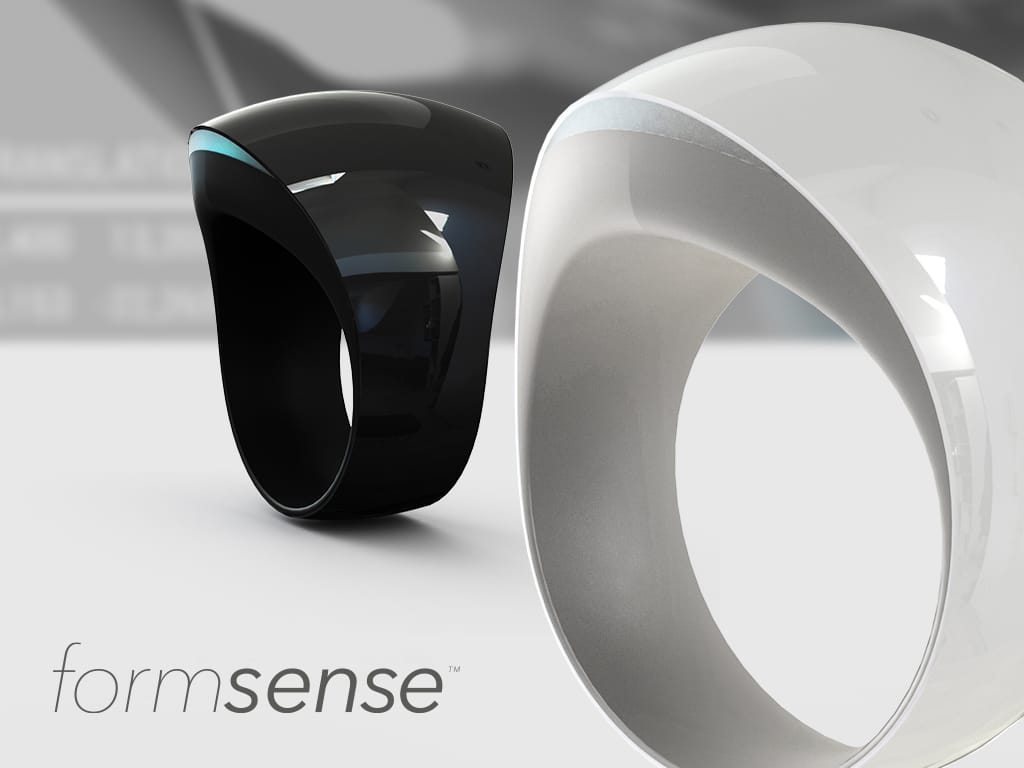A smart ring from Formsense, a San Diego-based wearable technology and smart apparel company, is the focus of a $2.4M National Institutes of Health (NIH) grant to quantify rehab outcomes in stroke survivors.
Sunghoon (Ivan) Lee, assistant professor in the College of Information and Computer Sciences and a health informatician from University of Massachusetts (UMass) Amherst’s Institute of Applied Life Sciences (IALS), is the study’s Principal Investigator. He is being supported by Prof. Paolo Bonato and Randi Black-Schaffer from Harvard Medical School – and human-centered mHealth design expert – Eun Kyoung Choe from the University of Maryland iSchool and Human-Computer Interaction Lab – as well as Nathan Ramasarma, founder and CEO of Formsense.
Weakness on one side of the body, especially the arm, is a common disability following a stroke. Maintaining restored function during and after rehabilitation therapy depends on the patient continuing to use and exercise the affected arm.
“Patients can try hard to raise up their arm and hand and do the other exercises in the clinical setting to try to get back to normal, but when they go home, they tend not to make use of the impaired side because they have this other perfectly good limb. The problem is if that continues then they will lose that functionality on one side, which may lead to more serious consequences, like falling.”
— Sunghoon (Ivan) Lee, UMass, principal investigator
Ring with a Wearable Sensor
This grant will be used to help deploy and test a novel mobile health (mHealth) system created by Formsense, designed with a wearable sensor that slips on a finger like a ring, to measure how much people used their affected arm following a stroke and to gauge the intensity of those movements – “how rigorously and vigorously they’re moving,” Lee notes.
“As a research-driven company, Formsense supports early and strong collaborations in academia in order to validate its technologies and explore commercial solutions that can accelerate adoption in the market. The vision of Formsense was always to improve the quality of people’s lives and the confirmation of this grant from the NIH is particularly gratifying to me and the whole team at Formsense.”
— Nathan Ramsara, CEO of Formsense

The finger-worn inertial sensors have the capability to provide individually tailored data to encourage the use of the affected limb. In a pilot study that was interrupted by the pandemic, four stroke survivors tested the prototype device and gave encouraging feedback, Lee notes.
Now he will focus on translating the data to create a comprehensive visualization that will motivate patients and inform clinicians. “How can we give information back to the patient so they can use it? And how can this comprehensive view of how they are actually performing at home be used in the clinical setting?”
Recovery Trajectory is Focus in Third Year
In the third year of the study, Lee will begin recruiting patients for a larger study by collaborating with Boston-based Spaulding Rehabilitation Hospital, the teaching hospital of the Harvard Medical School Department of Physical Medicine and Rehabilitation.
“We are planning to provide data about patients’ recovery trajectory – how well they have done over time – as well as their immediate performance. We’ll be looking at how to translate the findings into a real-world clinical practice to personalize the therapeutic programs for patients so they can better make use of their limbs.”
— Sunghoon Ivan Lee
[Source(s): Formsense, University of Massachusetts Amherst, Business Wire, News-Medical Life Sciences]
Related Content:
Telerehab vs In-Clinic: Which One Wins the Post-Stroke Arm Weakness Battle?
Games, Gloves, and Grip: PTs Rehab Arms and Hands Post-Stroke With YouGrabber
Video Game-Integrated Training Device Helps Stroke Survivors Regain Arm Function




